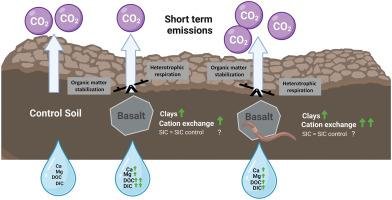
Imagine for a moment that the soil is like a sponge, soaking up all sorts of things, including carbon dioxide from the atmosphere. Just like those big, fluffy sponges you use in your kitchen, healthy soil can hold a lot of this carbon. Earthworms play a crucial role in this process. They churn up the soil while munching on organic matter and excreting nutrient-rich waste. This not only improves soil structure but also enhances its ability to capture and retain carbon. It’s a fascinating cycle that connects life below the surface with the health of our planet. So, let’s break down just how these little worms make such a big impact.
What is Carbon Sequestration?
Carbon sequestration is a natural process where carbon dioxide is captured from the atmosphere and stored in various forms. Think of it as nature’s way of tackling excess carbon. It happens in forests, oceans, and even in soil. In simpler terms, it’s like putting a cap on a soda bottle; it keeps the carbon from floating freely in the atmosphere. This is crucial because higher levels of carbon dioxide contribute to global warming.
Soil is one of the largest carbon reservoirs on the planet. It can hold more carbon than the atmosphere and all the world’s vegetation combined. This makes it vital in the fight against climate change. And guess who helps with that? You got it—earthworms! They make the soil healthier and more capable of holding onto that carbon.
How Do Earthworms Contribute to Soil Health?
Earthworms are often referred to as “nature’s plow.” As they move through the soil, they break down organic material, like leaves and dead plants, into smaller pieces. This decomposition process is essential for nutrient cycling. The more nutrients available, the healthier the plants grow. Healthy plants, in turn, absorb more carbon dioxide from the atmosphere, creating a win-win situation.
But that’s not all! Earthworms also help improve the soil structure. Their burrows create tiny channels, allowing air and water to circulate more freely. This aeration is vital for root growth and the overall health of the soil ecosystem. You might even think of earthworms as personal trainers for the soil, helping it become stronger and more efficient.
The Earthworm’s Role in Carbon Storage
When earthworms consume organic matter, they not only break it down but also transform it into stable forms of carbon through their waste products, known as vermicompost. This vermicompost contains a type of carbon that is less likely to return to the atmosphere. Essentially, they take carbon out of circulation for the long haul.
Moreover, earthworms help to store carbon in the soil, much like storing food in a pantry. The carbon-rich organic matter they leave behind can remain in the soil for years, or even decades, depending on the conditions. This means that the more healthy earthworm populations we have, the more carbon can be stored in our soils—now that’s an impressive skill set!
Different Species of Earthworms and Their Impact
Not all earthworms are created equal. There are more than 3,000 species of earthworms, and each plays a unique role in the ecosystem. For instance, some species are better at breaking down organic matter quickly, while others are more efficient at enhancing soil structure.
Some common species include:
- Lumbricus terrestris: Also known as the common earthworm, this species is excellent at aerating the soil.
- Allolobophora chlorotica: Known for its ability to break down organic material, it’s key for nutrient cycling.
- Eisenia fetida: Often called the red wigglers, these worms thrive in compost and are efficient at creating rich compost.
Each species contributes differently to carbon sequestration, so having a variety of earthworms in your garden or agricultural field can enhance the soil’s ability to store carbon. It’s like having a diverse team, each member bringing their own strengths to the table.
The Importance of Biodiversity in Soil Ecosystems
Biodiversity in soil ecosystems is crucial for maintaining soil health, which directly impacts carbon sequestration. A diverse array of organisms, including different species of earthworms, helps ensure that nutrients are recycled effectively. When soil is rich in biodiversity, it’s more resilient to changes, like extreme weather conditions or pests.
Think of it this way: if you only had one type of tool in your toolbox, it would be hard to fix a variety of problems. But with multiple tools, you can tackle whatever comes your way. Similarly, a mix of earthworm species, along with other soil organisms, creates a robust environment that can better capture and store carbon.
How to Encourage Earthworm Populations Around You
So, now that you know how important earthworms are, you might be wondering how to attract them to your garden or farm. Here are some simple ways to make your soil more earthworm-friendly:
- Avoid chemical pesticides: These can harm earthworm populations.
- Compost regularly: Adding organic matter creates a buffet for earthworms.
- Practice no-till farming: This preserves the natural habitat of earthworms.
By fostering a healthy environment for earthworms, you directly contribute to better soil health and increased carbon sequestration. It’s a small effort that can make a big difference.
Earthworms might be small, but their impact on carbon sequestration is enormous. They play a vital role in breaking down organic matter, improving soil health, and ultimately capturing carbon dioxide from the atmosphere. If we pay attention to these unsung heroes and support their populations, we enhance the ability of our soils to fight climate change.
Next time you’re digging in the garden or watching the rain wash over the soil, remember that those little squiggly guys are doing their part to save our planet. So, let’s give a nod of appreciation to earthworms. After all, every little bit helps in the fight against global warming!
